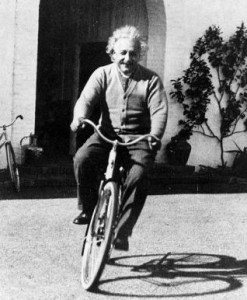DOC (Direct your Own Care) is a framework that breaks down chronic pain into basic parts that will enable you to develop your own treatment plan. It evolved from my own 15-year experience suffering from chronic pain with the last seven being extreme. I was fortunate to work my way back to a rich and full life. Helping my patients heal from chronic pain has been an incredibly enjoyable and rewarding phase of my career.
There are three parts to solving your pain:
- Understand chronic pain. It is a neurological problem that is much different than acute pain.
- All the variables that affect your pain must be simultaneously addressed.
- Take control of your own care, which is the most important step.
Introduction to Chronic Pain
Pain impulses begin with stimulation of pain receptors and are sent to the brain through peripheral nerves, then the spinal cord and finally your brain will unscramble the signals and determine the location and severity of the pain. A substance called myelin is laid down with repetition that etches in pain circuits. The process is similar to an athlete or musician learning a skill. However the frequency of chronic pain impulses is more like a machine gun. Pain circuits become deeply embedded in the nervous system within six to twelve months. Similar to knowing how to ride a bicycle they are permanent.
Pain signals danger causing anxiety. Your body secretes adrenaline, which is intended to protect you by increasing your heart rate and increasing the blood flow to your muscles. It also shuts down the blood supply to the frontal lobe of your brain (your thinking center) and amplifies the sensation of pain. Every millisecond of your life has evolved around avoiding anxiety. It is the only reason the human organism has survived. Your bodily responses to the environment are not centered on having a great time. Anxiety, Anger, and Adrenaline
Trapped by Pain
When you continue to be trapped by pain (or any life circumstance) you will become frustrated and angry. Anger results from loss of control. Any time you cannot fulfill a basic need such as air, food, or water you will become anxious then angry. Not being in pain is a basic need. Anger stimulates the body’s physiological response to meet that need. Therefore anger is anxiety with a chemical kick. Now the adrenaline levels really are elevated, which does improve your chances of solving a given problem. But it destroys the quality of your life, especially your close relationships. A terrible vicious cycle ensues – more pain, more adrenaline, more pain, and so on. Where and how does it stop? For most people it does not and it consumes them and everything around them. It is the worst part of the human experience. Your Hand Stuck Over the Stove
Anxiety is a neurological response to a threat and is not a psychological issue. It is a neurochemical reflex that sets off an automatic protective response. So similar to pain circuits, anxiety pathways are also permanently etched in and become stronger with repetition. That is why every human experiences increasing anxiety with age unless they learn to process it. If they do not, then their body will adversely respond with other physical responses. There are over 30 different symptoms that may occur. There is no exception. It is just a matter of degree.
As chronic pain always creates anxiety and frustration they are neurologically linked. Neuroscientists have a saying, “Neurons that fire together, wire together.”
It sounds like a dismal situation and it is if you approach the problem with traditional methods. Trying to deal with irrational pathways with rational means cannot work. The more attention that is paid to what I call “The Terrifying Triad” of pain, anxiety, and anger the stronger they will become. If you try to ignore them then it becomes even worse. The more you try not to think about something you will think about it more. So what is the solution?
Neurophysiological Pain Disorder – Back in Control Radio
The Solution
Healing occurs around the following sequence:
- Awareness
- Hope
- Forgiveness
- Play
You may think that this does make any sense. Where is the medical terminology? You will learn that all of these concepts predictably affect the body chemistry and directly alter the function of each and all of the organ systems. That is why so many different symptoms are possible. The Stages are the action plan of Back in Control and will guide you along your healing journey. The process is largely self-directed, so much of your care can be in partnership with your primary physician.


